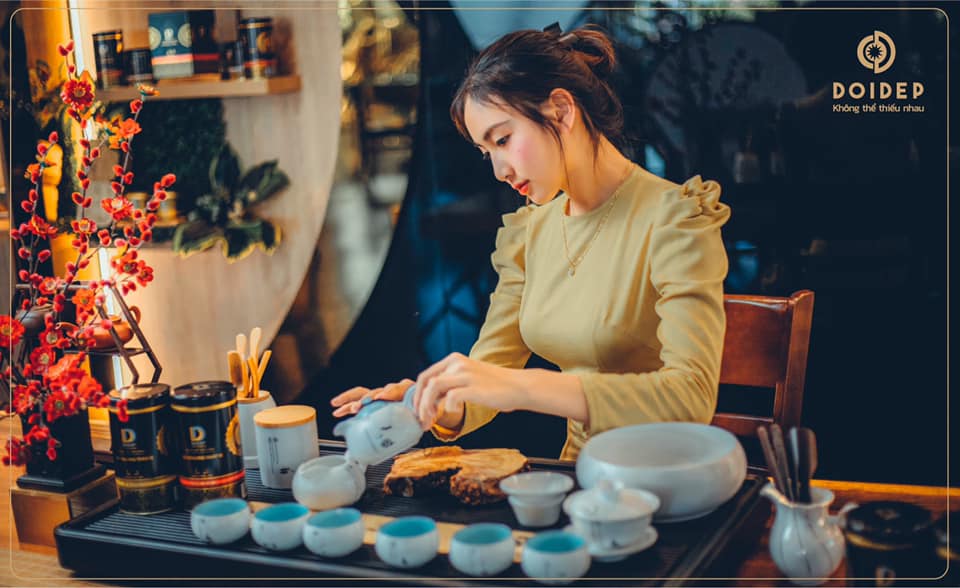TEA FACTORY 1927
VIETNAM TEA INDUSTRY
Vietnam ranks 5th in area and 6th in tea output in the world. In 2017, Vietnam had a tea growing area of 129.3 thousand hectares with an output of 1,048.8 thousand tons of fresh tea.
Many documents confirm that the Vietnamese people have known how to drink tea for a long time, at least hundreds of years, even millennia. When talking about Bach Viet, Confucius said: "The Bach Viet people specialize in growing rice fields to eat, unlike us who grow millet and wheat. They drink water cooked with leaves taken from the forest called tea. For Dai Viet, from the perspective of fairy tales and legends, evidence for the origin of tea has appeared since the Hun Dynasty.g Vuong. Remains of tea plants and fossilized tea leaves were also discovered in Phu Tho, the ancestral land of Hung Vuong. Thus, Vietnam has a long history of tea. Evidence from documents, archeology, and research all confirms that Northern Vietnam belongs to the origin region for the first tea plants.
One of the types of Vietnamese tea recorded in history is the "fragrant tea" donated by Dinh Lien to the Song Dynasty in the 10th century. Therefore, Vietnamese fragrant tea seems to have been flowing for at least more than 1,000 years.
BAO LOC TEA INDUSTRY
Bao Loc city has long been known as the "tea capital" of the South. The first tea trees were planted at a French plantation in 1927.
“In the fields, thousands of thatched grass blow dust
The forest is sparse and soft, covered with velvet carpets
The place where Rling takes flight..."
Basalt red soil at an altitude of about 800 meters in ancient B'Lao is very suitable for tea and coffee plants. Tea trees in Bao Loc are growing more and more, especially in the early 50s when Northerners migrated to the Central Highlands. They cleared wild forests to create tea hills along the national highway to facilitate transportation to bring tea to Saigon and the six provinces of the Mekong Delta.
The tea hills create a giant green flower with petals up to 20 kilometers wide surrounding Bao Loc city. The tea tree in Bao Loc gives a naturally sweet flavor right from the raw tea buds when newly picked. Later, people also built a tea processing factory on the spot. They package the herbal tea and then transport it to places where the finished product is processed or flavored. Highway 20 is filled with convoys of vehicles picking up bags of tea and taking them to the six provinces. A B'Lao tea kingdom was formed. People also consider the Tran Phu street extending from the end of Bao Loc pass to the intersection of Le Hong Phong street as "fragrant road".
“Immense blue
Thousands of upland hills, fragrant with tea
In the floating morning mist
Forever fragrant on your lips with the acrid taste of love"
TEA FACTORY 1927
Lam Dong 1927 Tea Factory was conceived in 1927 and officially started construction in 1932. This is one of the two longest-built factories in the Central Highlands of Vietnam. The factory was owned by the French and was built on the pristine tea area at that time in B'lao District, Dong Nai Thuong Province (now Bao Loc City, Lam Dong Province).
Having gone through many historical ups and downs, the 1927 tea factory with its machines remained intact but was no longer suitable for modern production processes. The factory is tinged with moss, the machines up to 80 years old are no longer suitable for the times, but they are not inanimate objects, but witnesses of time, demonstrating the development process of industry. tea industry, is the pride of Lam Dong tea production industry in particular and Vietnam in general.






